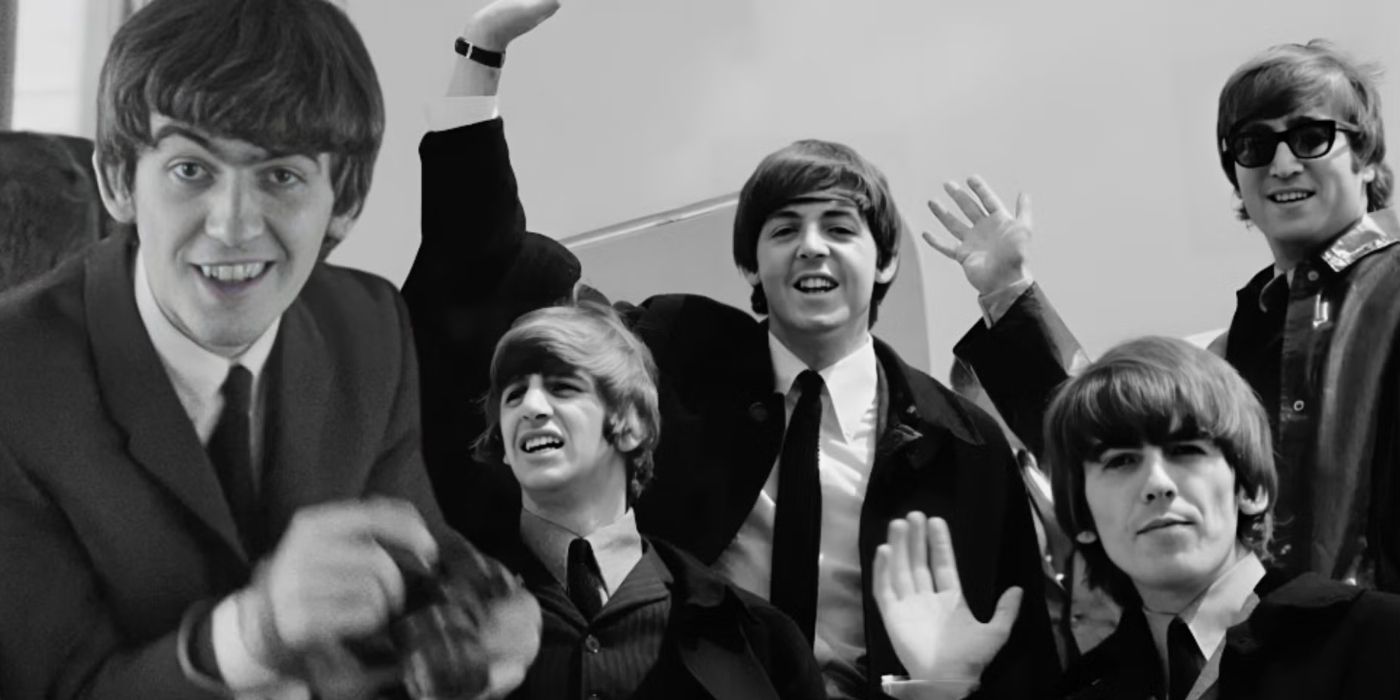Debuting on Disney+, director David Tedeschi and producer Martin Scorsese return to ground zero of the British Invasion in Beatles ’64. Chronicling the pre-hippie days of The Beatles, the behind-the-scenes film explores a time when The Beatles were a far more conventional, safe group. It’s the year 1965 that was secretly a turning point for the band. It would take two years and a handful of transitional albums for their shift to be fully realized, but the ramifications were profound.
The catalyst for many of the hits of The Beatles and their contemporaries was a single instrument, discovered by fluke by their lead guitarist. More influential than even snarling Fender feedback, the defining (and arguably most overused) sound of the ’60s counter-cultural scene was the sitar. A Hard Day’s Night and Help! weren’t supposed to be taken seriously, and today, not even a lot of Beatles enthusiasts have ever seen them, but without the movies, the band’s development and music history in general would be vastly different. A generation and industry looked to the Fab Four for inspiration. In 1965, George Harrison delivered, with some help from his friends.

- Runtime
-
108 Minutes
- Release Date
-
November 29, 2024
- Cast
-
Paul McCartney
, Ringo Starr
, John Lennon
, George Harrison
, Martin Scorsese
One of the Most Important Counter-Cultural Films Was a Complete Joke
Think of the Bealtes’ filmography as an early form of music videos before MTV. They had minimal input, their personalities shining through otherwise goofy plots about spies and ancient murderous cults. George, Ringo, John, and Paul’s follow-up to A Hard Day’s Night, Help!, was just such an inconsequential cash-in. In 1965, on the set of the film, George Harrison had a culture-shifting moment of boredom, according to the book The Dawn of Indian Music in the West. Spotting an odd, abandoned stringed instrument, the British guitarist toyed with it between takes, more amused by it than the film he was starring in.
Famous for its droning, twanging rhythm played on a varying number of strings with frets, the Indian musical device has been around for centuries. Harrison was unable to play it at first, the instrument requiring not only training but also a special sitting position — the half-lotus pose — and unique arm placement foreign to traditional guitar players.
He gained some proficiency after consulting with sitar expert Ravi Shankar, who soon encouraged the band to explore meditation and spiritualism. Though the band desired to grow and experiment, they were not trying to radically reinvent themselves. The “quiet Beatle” only yielded to peer pressure, pestered by John Lennon to play the sitar on the song “Norwegian Wood” to spice up the album Rubber Soul, the novelty of Beatlemania dissipating since their US TV debut.
How The Beatles Became Unlikely Cultural Ambassadors
The sitar turned out to be a kind of gateway drug, spawning an onslaught of paisley fashions and hippie-themed flicks. Giving credit where it’s due, Harrison wasn’t the first rocker to try and make the instrument mainstream. Fellow UK musicians The Kinks beat them to the punch, but until Harrison, it was still considered too bizarre for the likes of stuffy record labels or producers. The Yardbirds had recorded a song with a sitar but scrapped it as the instrument was deemed too eccentric.

Related
The Best Movies About Rock and Roll, Ranked
Rock and Roll isn’t just a musical genre; it’s a way of life. The following films prove why.
Until the Beatles, off-kilter instruments were simply not conducive to radio success. Brian Jones of The Rolling Stones quickly copied the idea, adding an exotic flare to the song “Paint it Black.” Scottish folk rocker Donovan incorporated it into one of his biggest hits, “Sunshine Superman,” soon joined by The Lemon Pipers’s “Green Tambourine” and Scott McKenzie’s “San Francisco.” By 1971, you couldn’t turn on the radio or TV without encountering someone jamming on one.
The Beatle Bump and the Sitar’s Complicated Legacy
Harrison got bored and moved on, but Shankar morphed into an unconventional rock star, his set featured in the doc Woodstock. He was surprisingly chill regardless of the fact people associated Indian music with psychedelic fads and drugs, and Western artists often didn’t always respect the instrument or know how to play it. In a Dick Cavett Show interview alongside Harrison, he said, “I request my listeners to be in a clear mind, because I like to make them high with music.”

Related
Peter Jackson Recalls The Beatles’ Failed Attempt to Make a Lord of the Rings Movie
Lord of the Rings director talks about the failed third movie starring The Fab Four.
Sadly, the sitar had already been swallowed up in the larger caricatured vision of the ’60s, thanks to psychedelic movies like Peter Sellers’ The Party. The heyday ended in the early ’70s, with tastes radically changing. Despite the zeitgeist, the sitar, in both traditional and electric forms, was present in prestigious recording studios for decades. Help! is not a remarkable film, and singers taking up acting wasn’t a novel phenomenon either, but without the 1965 vanity project, we probably wouldn’t have gotten many of the best songs of the golden era of rock and roll. Beatles ’64 is currently streaming on Disney+, and Help! is available to rent on AppleTV or obtained on Blu-ray/DVD.
